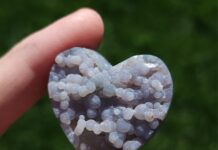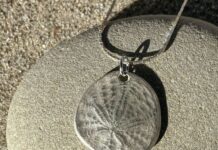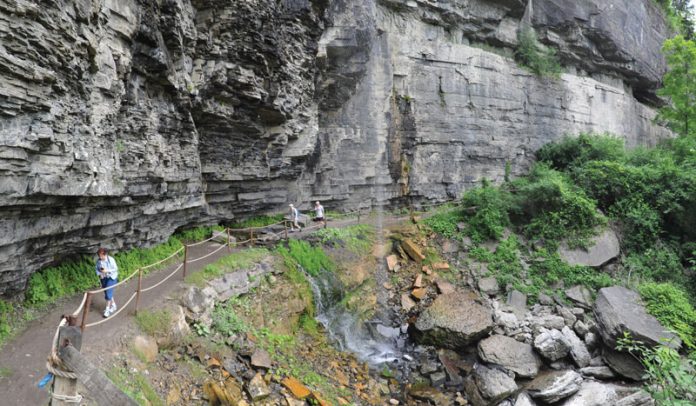
The Helderberg Escarpment fossils of upstate New York are world-renowned. But did you know that New York State Governor Nelson Aldrich ‘Rocky’ Rockefeller (1959-1973), inspired as a young man by a visit to Lhasa, Tibet, and the Potala Palace of the Dalai Lama, almost built the Empire State Plaza there?
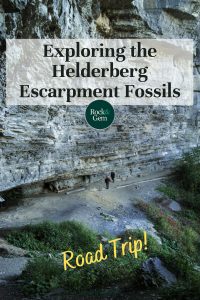
Rising from the Red Mountain in the center of the Lhasa Valley, Potala had been the winter palace of the Dalai Lama since the 7th century. Rockefeller sketched its grandeur on the back of an envelope that he shared years later as governor, with architect Wallace Harrison (designer of Manhattan’s Rockefeller Center). He envisioned a modernist plaza, similarly built atop a three-mile-long escarpment of a 1,200-foot tall limestone cliff, with a panoramic view of four mountain ranges: the Adirondacks, Berkshires, Green Mountains and Taconics.
Fortunately for fossil hunters and geologists, Rockefeller’s plans for urban renewal were nixed because of the area’s lack of proximity to the city or downtown state offices.
Today, preserved within John Boyd Thacher State Park, the Helderberg Escarpment’s incomparable fossils and limestone layers share the story of land once covered by a shallow sea and brimming, for millions of years, with marine life.
By the Sea, The Sirulian Sea
The escarpment had inspired Rockefeller to think “up” (Heldeberg is Dutch for ‘clear mountain’) but savvy fossil and rock buffs will see how the good stuff starts at the bottom, where the “Cliffs Higher Than the Palisades” found their origin as a salty seabed.
The Erie Lowlands-Allegheny Plateau consists of flat-lying layers of sediment rock from the Late Silurian and Devonian periods, 420-380 million years ago.
The oldest are the rocks of the Upper Silurian (dolostones, evaporites and shales) and limestones of the Helderberg Group. These tell of a warm, shallow sea covering most of New York. Above a terminal dominated by carbon rock, an unconformity records the sea’s retreat and the beginning of erosion to the exposed Helderberg Group.
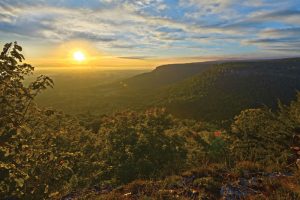
Courtesy of NYSHR&HP
Helderberg Workshop, a nonprofit organization at the foot of the escarpment, says the exposed cliff was “essentially the shore of an ancient sea,” a vertical stretch of sedimentary rock, laid down by the ebb and flow of water over half a billion years, that by the 1800s was destined to become a world-famous geological landmark and hotbed for the scientific query.
Fantastic Fossils
Helderberg Escarpment fossils chronicle a geological history that began intriguing scholars worldwide in the early 19th century. So, when you go, don’t miss a stop by the Thacher Park plaque erected in 1933 to 16 great inquiring minds that found inspiration and information there: “In memory of those pioneer geologists whose researches in the Helderbergs from 1819 to 1850 made this region classic ground.”
Among them: American geologist Amos Eaton (1776-1842), founder of the modern scientific prospectus in education; Eaton’s surveyor and mineralogist, James Eights; paleontologist James Hall (1811-1898), discoverer of the first North American fossil reefs; William W. Mather (1804-1859) author of The Geology of New York-Part IV; and Sir Charles Lyell, a Scottish Baronet (1797-1875), whose evolution uniformitarianism posited that the formation of the Earth’s crust was through small changes, occurring over vast periods, according to known natural laws.
Fossils here include brachiopods, coral, crinoid stems, cystoids, and trilobites. Brachiopods have hard “valve” shells on their upper and lower surfaces (unlike left/right placement on bivalves) and include nearly 30,000 fossil species with less than 400 surviving today.
Crinoids mislabeled “sea lilies,” are not plants but animals, with a calyx (skeleton) that provides a stony anchor to hold it fast to a sea floor.
And who doesn’t love a good trilobite?
Certainly, Charles Emerson Beecher did who wrote, in 1893 in the American Journal of Science, “Attention has been called to the perfection of fossils in the siliceous limestones from a limited locality in the Helderberg Mountains. Proper collecting yields quantities of the most delicate and exquisitely preserved remains. The conditions of preservation are such that not only are large and strong species preserved, but also the smallest and young of many in all stages of growth.”
Indian Ladder Trail is probably the park’s most popular hiking choice. It was named after native trails that originally traversed the escarpment that led to settlements in the Schoharie Valley and later, during the Revolution, to caves providing refuge for loyalists. Look for dark grey-to-black chert nodules (silica-rich lumps originating from the diagenesis of shelled organisms), which were used as arrowhead material by local indigenous nations. Thin grey, black, or brown shale beds along the trail hold small mollusks and snails. Look up and you may find brachiopods, crinoid stems, and (if lucky) a black, dime-to-quarter-sized trilobite or two.
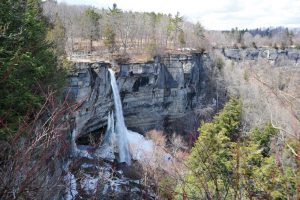
Courtesy of NYSPR&HP
Thank You, Mr. & Mrs. Thacher
Who were John Boyd and Emma Treadwell Thacher, and why is a park protecting a half-billion-year-old geologic treasure named after them?
The interest originally generated in the cliffs by the scientific community — leading one to call the Helderbergs “a key to the geology of North America” – began attracting tourists. The bucolic mountain valley below the escarpment started, thanks to a burgeoning Delaware & Hudson Railroad, to look like an uncomfortable plethora of boarding houses, hotels and campgrounds.
Enter former Albany mayor and state senator, J.B. Thacher (1847-1909). In 1906, he and Emma Treadwell Thacher (1850- 1927) began acquiring property along the escarpment to protect it from development.
The couple owned numerous ridge-top parcels before his passing three years later.
Thacher, an inveterate collector, also had an impressive array of autographs that included every signer of the U.S. Declaration of Independence, which Emma later donated to the Library of Congress.
She also donated 350 of their acres to New York State for a public parkland. In 1914, the legislature delegated management to the American Scenic and Historic Preservation Society (ASHPS) so that “the lover of nature, the geologist, the seeker for inspiration can here make interesting explorations of the wonders of nature…”
In 1924, when New York State passed a $15 million bond to develop a state park system, Thacher Park received $25,000 for development. The state park plan, which sought to link urban populations with scenic resources, called Thacher “the key park serving the Capital District.” This prompted plans for additional improvement and, by the 1960s, its parking lots “accommodated record-breaking weekend crowds.”
By the mid-1990s, the Open Space Institute picked up where the Thachers had left off, identifying and acquiring more key parcels along the escarpment and conveying them to the state as additions to the park. In a decade, they more than doubled the park’s size.
Exploring Today
While collecting fossils is prohibited in state parks, you’ll find all the same opportunities for scientific inquiry and exploration of the natural world that has drawn visitors for centuries to one of the richest fossil-bearing formations found anywhere.
As recently as April 2022, Thacher Park was named a Best Of The Capital Region winner and “an adventure every time.”
Fossils are easy to spot on rocks in streambeds, in stone walls along the Overlook and in exposed rocks on the Cliff Top Trail.
Before you strike out on one of more than 25 miles of trails, check out the Visitor Center’s geological and historical exhibits showcasing the Helderberg Escarpment, and the panoramic Helderberg Room, a favorite spot for weddings and celebrations.
Outdoors, camping for tents or RVs is available at any of 140 sites at Thompson’s Lake Campgrounds. Sport climbing is available with a signed permit application.
A Wild Play Adventure Course has 60 aerial games, a 40-foot jump, and 15 zip lines. A New York State Park vehicle entrance fee of $6 is collected 9 a.m. to 5 p.m. daily, May 1-October 31.
In 1905 – half a billion years after a sea floor became a limestone cliff – Thacher wrote, “The writing of a man, it is held, is the most perfect relic he leaves behind.”
One visit to the geological and paleontological wonder that bears his name (and inspired a Rockefeller) and it’s fair to say that both underestimated the power and perfection, millennia after millennia, of the Helderberg Escarpment.
This story about the Helderberg escarpment fossils previously appeared in Rock & Gem magazine. Click here to subscribe. Story by L.A. Sokolowski.


